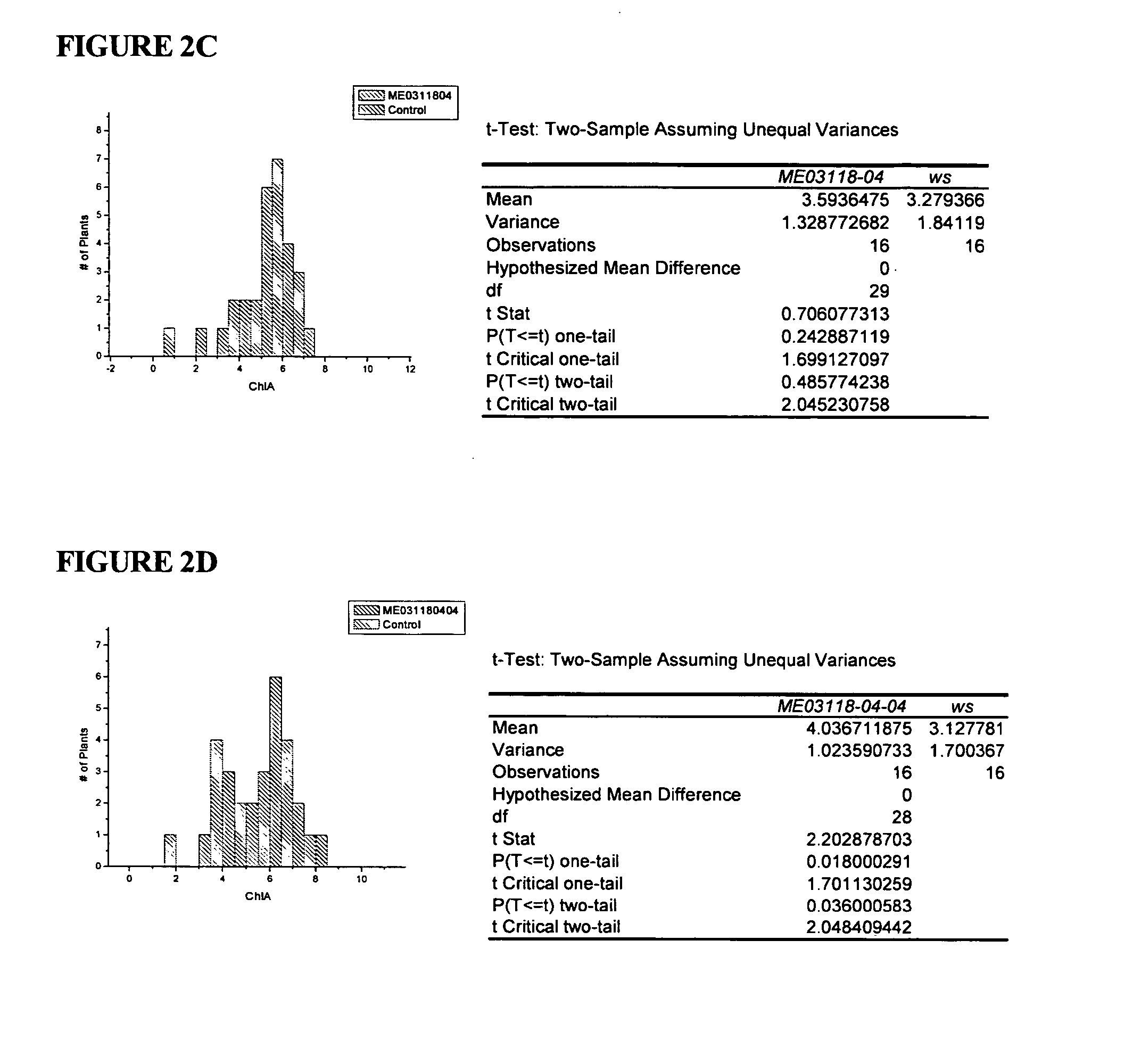Nucleotide sequences and polypeptides encoded thereby useful for modifying nitrogen use efficiency characteristics in plants
a technology of nucleotide sequences and polypeptides, which is applied in the field of isolated polynucleotides and polypeptides encoded thereby, can solve the problems of time-consuming and labor-intensive breeding process, and achieve the effects of increasing biomass production, increasing yield, and increasing photosynthesis ra
- Summary
- Abstract
- Description
- Claims
- Application Information
AI Technical Summary
Benefits of technology
Problems solved by technology
Method used
Image
Examples
Embodiment Construction
1. Definitions
[0040] The following terms are utilized throughout this application:
[0041] Allelic variant: An “allelic variant” is an alternative form of the same SDF, which resides at the same chromosomal locus in the organism. Allelic variations can occur in any portion of the gene sequence, including regulatory regions. Allelic variants can arise by normal genetic variation in a population. Allelic variants can also be produced by genetic engineering methods. An allelic variant can be one that is found in a naturally occurring plant, including a cultivar or ecotype. An allelic variant may or may not give rise to a phenotypic change, and may or may not be expressed. An allele can result in a detectable change in the phenotype of the trait represented by the locus. A phenotypically silent allele can give rise to a product.
[0042] Chimeric: The term “chimeric” is used to describe genes, as defined supra, or constructs wherein at least two of the elements of the gene or construct, ...
PUM
| Property | Measurement | Unit |
|---|---|---|
| melting temperature | aaaaa | aaaaa |
| temperature | aaaaa | aaaaa |
| Tm | aaaaa | aaaaa |
Abstract
Description
Claims
Application Information
 Login to View More
Login to View More - R&D
- Intellectual Property
- Life Sciences
- Materials
- Tech Scout
- Unparalleled Data Quality
- Higher Quality Content
- 60% Fewer Hallucinations
Browse by: Latest US Patents, China's latest patents, Technical Efficacy Thesaurus, Application Domain, Technology Topic, Popular Technical Reports.
© 2025 PatSnap. All rights reserved.Legal|Privacy policy|Modern Slavery Act Transparency Statement|Sitemap|About US| Contact US: help@patsnap.com



